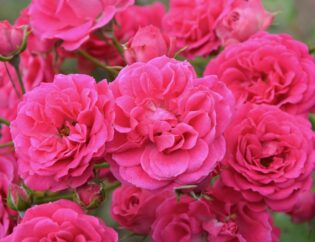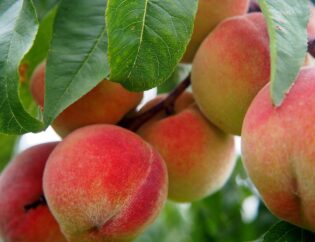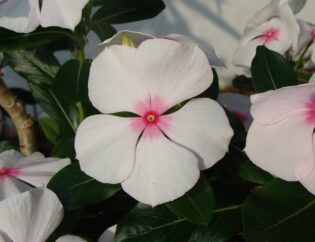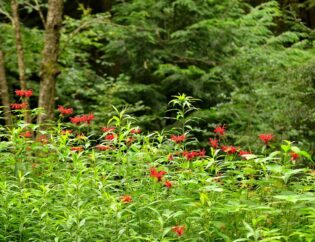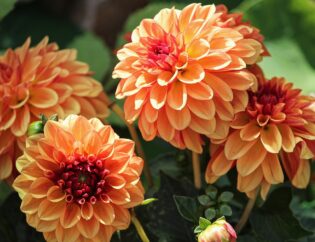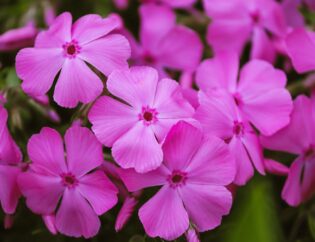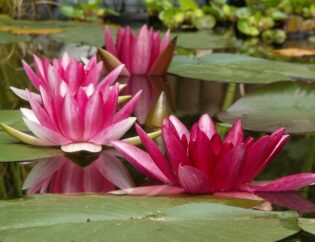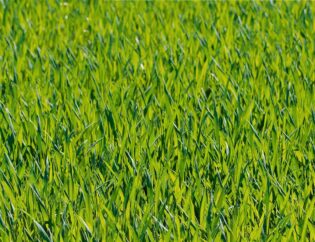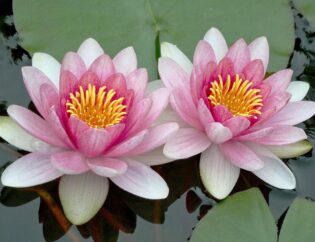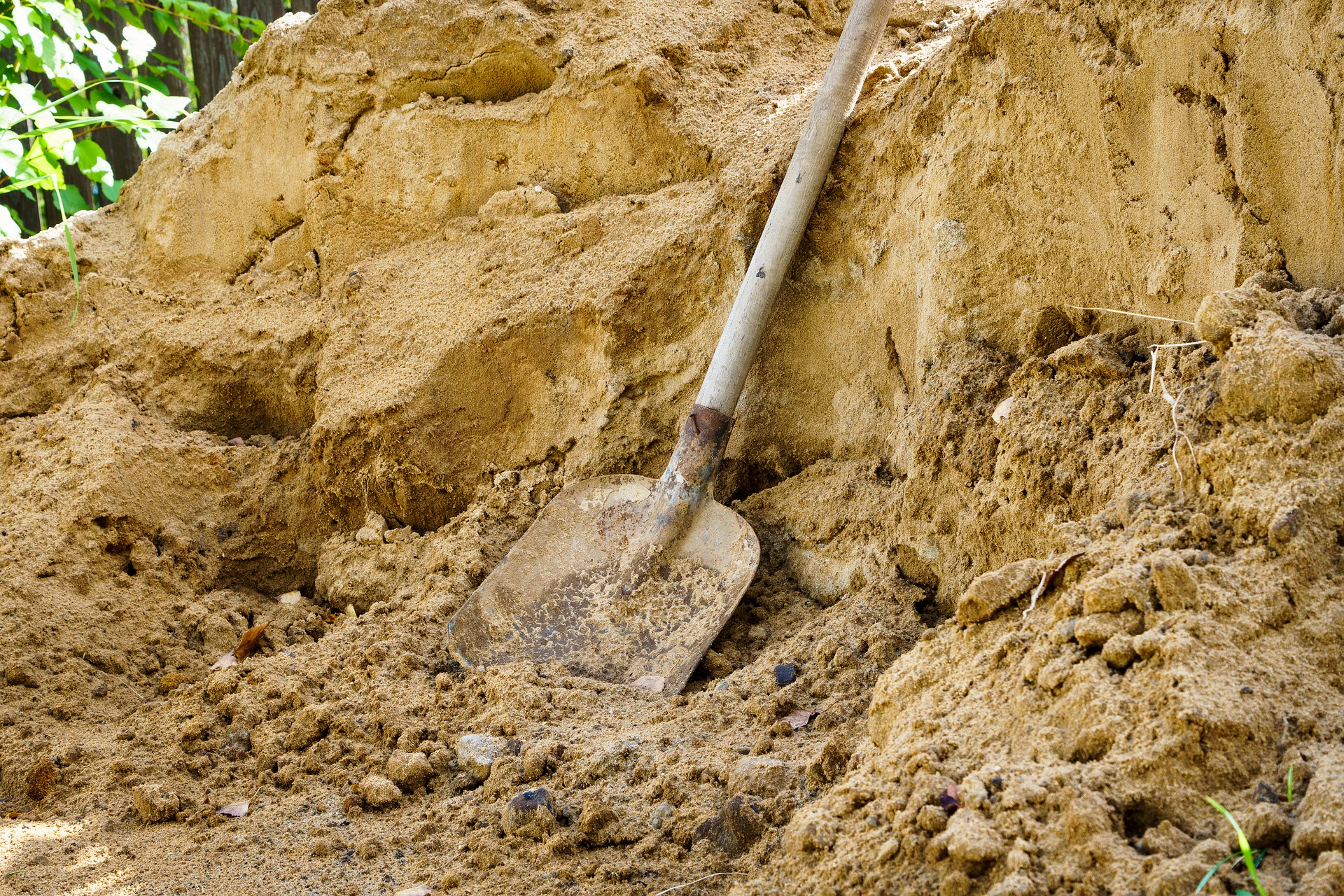
The right dirt can make or break your landscaping makeover. However, it’s a factor that many homeowners overlook. After all, dirt is hidden by grass, shrubs, and flowers and is never the focal point. The truth is, choosing the appropriate landscaping dirt is critical for plant success and an outdoor space that thrives.
Otherwise, you’ll spend a lot of time and money trying to fix a poorly planned landscape. Once plants are in the ground, the critical step of preparing the soil is missed and an opportunity lost. Keep reading to learn more about different soil types and how to choose the best one for your project.
Clay
Clay is prevalent in Georgia since it’s the main ingredient in native soil. However, clay is susceptible to compaction, preventing water and nutrients from penetrating to the plant root zone. It has high water retention and delicate roots can rot if kept too moist for too long.
Because the drainage of clay soils is poor, it’ll require amending to be used for growing vegetables or ornamentals. Organic materials like pine bark and composted leaves help prevent compaction and improve soil quality. Sand can improve drainage.
All lawns benefit from timely aeration, but a lawn over clay is especially vulnerable to compaction. Thus, aeration for such a lawn must be done regularly to maintain healthy, lush turf.
Sand
Sand is a fine aggregate that allows water to pass through easily. It’s excellent for improving the drainage characteristics of your soil and can also be used for walkways, play areas, and border areas.
Sand is very stable for backfill purposes because it doesn’t create voids in the soil. Another advantage is that it can be used as a soil amendment in garden beds to improve drainage and helps with more even soil moisture.
On the other hand, it has a low capability for retaining moisture and nutrients. Additionally, it tends to compact and makes conditions difficult for growing plants. While it is a great tool for amending soil, it isn’t a stand alone substitute for a proper garden or potting soil.
Silt
Silt is sedimentary soil composed mainly of quartz. But despite being made up of tiny rocks, silt feels soft and smooth to the touch – similar to flour.
It’s collected from water beds or eroded soil and is a critical component of fertile soils. As such, it’s excellent for lush lawns, planting vegetables, or growing other ornamentals that require a lot of nutrients. Many plants grow well in a silty soil, and it retains moisture and nutrients well.
Conversely, there are some downsides if the yard is extremely high in silt. This soil type is prone to erosion and has poor drainage. Pure silt after a rainstorm can make the ground unwalkable, boggy, and difficult to work. Construction on silty ground is problematic as it has poor mechanical properties when wet.
Loam
Loam is a mixture of sand, silt, and clay. Most plants do best in loamy soil due to a proper balance of organic and inorganic material. When soil is amended for gardening, a loam is the end goal.
There are several great reasons to garden in a loam soil. Even moisture retention, neither too wet (root rot) nor too dry (wilting), makes establishing plants easier. It also holds its shape well without compacting and is softer for digging in the garden. Layers of loam can be put over unfertile or rocky soil to make gardening possible.
A downside to this soil type is a vulnerability to erosion. Care must also be taken to maintain the soil over time. Soil testing done every other year or so catches deficiencies before they get out of hand.
Fill Dirt
Fill dirt is composed of sand and rocky stone particles. It’s naturally present below the topsoil layer. Usually, homeowners can use it for smoothing and elevating the ground level for planting beds or other landscaping features. In addition, it’s used widely in building foundations, around retaining walls as backfill, and for fixing drainage problems.
This is not soil for gardening. It’s filled with gravel and has poor nutrient content. Certainly, it’s widely used in construction. But save the headache of trying to grow in it and instead bring in proper topsoil. Using the right landscaping dirt at installation will save money and time down the line.
Topsoil
Topsoil is the dark, outermost layer of earth. This is where most of the biological activity takes place. Its dark color is due to the mixture of organic matter, minerals, water, and air.
Since it has a high percentage of organic matter, it’s ideal for providing the nutrients that plants need to thrive. Topsoil is generally more expensive than other types of soil so keep that in mind when planning your project.
Garden Soil
Garden soil is usually topsoil amended with organic compost. This combination improves the soil’s natural properties by enhancing moisture retention and aeration. It may also contain fertilizer for enhanced plant growth across large, landscaped areas.
It can be ordered in large quantities and delivered to the curb, or it is also available in smaller bags from home and garden centers. This soil type is well suited for large vegetable gardens, raised beds, and flower beds.
Potting Soil
As its name suggests, potting soil is formulated to provide the best soil mixture for growing plants in pots. This is because it includes organic additives like sphagnum moss, sawdust, bark, and other materials to improve its drainage and aeration properties. However, potting soil can be expensive, so it usually isn’t used for larger areas.
This soil tends to hold water well, after all, small pots of soil tend to dry out faster than the ground. As a result, watering needs to be done carefully to make sure plants are not overwatered, especially if using automatic irrigation.
Mushroom Compost
Mushroom compost is commonly used as an additive to improve the organic composition of native soil. Different uses may require a specific application of mushroom compost.
For example, landscaped beds can be prepared by spreading 8-12” of compost throughout. To prepare a lawn, up to ½” of compost is suggested. In pots, mushroom compost should make up around a third of the pot’s volume.
Coffee Grounds
Coffee grounds are a common additive to home compost mixes, as they contain high amounts of nitrogen, potassium, and other beneficial nutrients. However, it’s important to control how much you use. Unwashed coffee grounds can raise your soil’s acidity to a level that’s not ideal for most plant growth. Also, since they’re very fine particles, coffee grounds can obstruct air and water penetration into the soil.
Peat Moss
Peat moss is high in organic material, as it’s made up of decomposed plants and animals. It’s light and spongy to the touch, making it easy to work with, and it’s often soggy due to its high water retention properties.
Peat moss is a common amendment for lowering the pH of highly alkaline soils, as it has an acidic pH of 3.5-4.5.
River Sand
River sand has few nutrients, but it’s often added to the soil to increase drainage properties. If your soil is heavily composed of organic matter and prone to waterlogging, adding river sand can improve aeration and prevent plant roots from rotting.
Since it is affordable in large quantities, soils with a high volume of river sand are used to fill holes and level out large areas. Sand also compacts down well for these purposes.
Aged Pine Bark
Aged pine bark is often used as a soil conditioner due to its low pH value and its ability to increase aeration for air and water penetration. Many people use it in measured quantities to adjust the pH value of their yards and landscaped areas.
In addition, it can improve the porosity and drainage properties of the soil. It’s also useful as a mulching material and is seen as a top dressing in many large pots or around the base of trees. A layer of mulch prevents weed growth, improves moisture retention, and is an attractive top dressing.
How Can I Get Soil Testing Done?
To choose the right type of landscaping dirt for your yard or garden, you should always test your existing soil first. Only then will you know what amendments you need or what plants can be grown on the native soil.
If possible, it’s best to test your soil well in advance of planting, as it can take time for amendments to take effect. For example, lime takes two to three months to react with the soil.
You should also take various samples from different areas of your property at a depth of 4-6 inches. This will give the best overall picture of your native soil health. For more information on soil testing, look no further than this advice by the University of Georgia Extension.
Get the Right Dirt for Your Yard
Still unsure about choosing the right landscaping dirt for your Georgia yard? Don’t hesitate to contact our landscaping services experts here at Atlanta Turf & Tree. Our roots run deep with more than 35 years of combined experience in the industry.
Founded in 2007 and specializing in the greater Atlanta area, we know a thing or two about landscaping in Georgia. We can help you with all of your landscaping and lawn care needs, including choosing the best dirt to get your landscaping done right.
